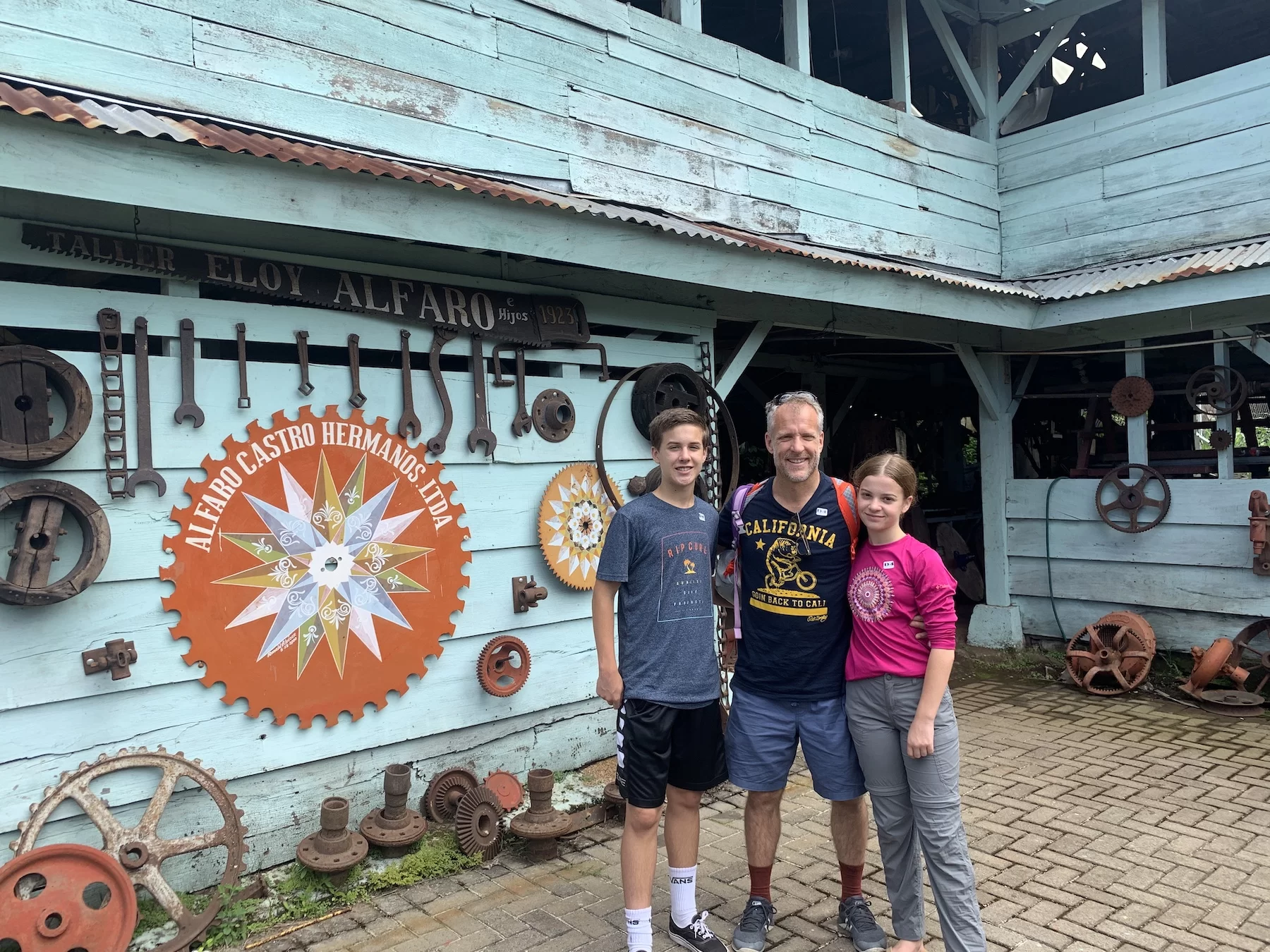Your spot is reserved for 30 days!
We have your seat reserved for you for 30 days.
We’ve just sent you an email confirmation, so please take a moment to ensure it has landed in your inbox (remember to check your spam, junk and promotions folders as well). If you can’t locate the email, don’t hesitate to reach out to us directly for assistance. While you’re here, you might want to explore our FAQs for any additional information you may need.
If you have further inquiries or need personalized assistance, feel free to email us or schedule a call. We’re here to support you every step of the way!
Spanish Immersion Program FAQs
Our trip leaders will seek the attention of a health care worker and make decisions along with parent/guardians/emergency contacts back in the US. We will be in touch with parent/guardians/emergency contacts as soon as possible. We will also help the participant initiate the process for claims on the travel/medical insurance policy that was purchased.
Usually this is not an issue. We have several host families that can accommodate food allergies and dietary restrictions. Please let your trip coordinator know ahead of time so we can prepare for this accommodation.
If there is an issue with your host family, trip leaders will be very involved and be able to make a quick switch to find a family that is a better match for you.
Yes, most families have Wi-Fi in their homes, and you will be able to connect to Wi-Fi at the language school.
You will take an online pre-departure course that covers all the logistics, expectations and important details for traveling. And we will usually have 1 or 2 video meetings online so that you can meet the other participants, learn specific trip details and itineraries, start working in groups on your volunteer projects, and a number of other things.
From about May/June through October/November it is rainy season. The sun may shine in the morning (and it will be humid), but it will certainly rain in the afternoon (but it’s usually not a cold rain). December through April is dry season. It will be sunny, humid, and may rain here and there.
October – March Costa Rica is on Central Time, and Ecuador is on Eastern Time. April – September Costa Rica is on Mountain Time and Ecuador is on Central Time.
This is actually the #1 reason we chose to have our Spanish Immersion Programs based in these two countries. While Costa Rica has a long history of peacefulness and political stability, Ecuador has been exceeding the international community’s expectations for friendliness and safety. Tourism is a very large portion of both countries’ economies, which means that in general tourists are treated very well.
The time you spend in Ecuador will be in the Cuenca and Quito areas. Quito is the bustling and modern capital city, while Cuenca is colonial and quaint. In Costa Rica we are in a town called Santo Domingo de Heredia. This town is about 20 minutes N of the capital city San Jose. The language school where you will walk to every morning is about 600m S of the downtown area on the main road.
You will be staying in a middle-class home setting. You can expect the home and your bedroom to be small. Your bed probably won’t be as comfortable as your bed is here in the US. Most homes have tile floors, no carpet. Most families do not have dish washers nor clothes driers. You may be given a couple different keys for the home: one for the exterior gate off the street, and another for the actual doors to the house.
Your host families may speak a little English, particularly if they have school aged children. However, we encourage them to not speak English with you. The best way for you to continue learning Spanish is to have to use it!
In Ecuador, probably. In Costa Rica, no – that’s not likely. We specifically limit the number of students in the host family. This increases your opportunities to speak Spanish. If you’re traveling with your spouse for some or all of the time, we will place you in the same family.
Having a student is a significant boost to our host families’ incomes. Because there are more families requesting students in the town than we have need for, we are selective in who we employ to host you. The host families that our students stay with are screened for various things:
– Criminal and/or questionable social activity
– Suitability of the living quarters that you will occupy
– General “likeability” and friendliness
– Availability of a family member at the home during the hours you are scheduled to be there
– Proximity to the language school
Certainly, there aren’t a ton of different faith options in town, but you can always find a nice Catholic church in the middle of town with several service times throughout the week, an evangelical church close to the town center and several other faith worship options in nearby towns.
Typically 60 – 90 days. If you have any questions about how to get a passport for your Spanish immersion for adults program, you can find information online at http://travel.state.gov/content/passports/english/passports.html.
In general, yes. This depends on your service provider and your specific phone, so check with your service provider first. If your specific phone isn’t capable, most service providers have world phone rental options. You can purchase calling cards when you arrive to Costa Rica. We also recommend Skype, What’sApp, and Facetime for staying in touch back home.
Absolutely. Of course it’s always a good idea to have a little local cash on you (Colones for Costa Rican or Dollars for Ecuador), but honestly you don’t need much right away when traveling with a Common Ground group. After you get settled into your host family, we’ll make sure you have the opportunity to exchange $US right away. We do not recommend exchanging your money at the airport as they generally have unfavorable exchange rates. Credit & Debit cards are accepted throughout both countries, and ATM machines are more and more common every year. The ATM is convenient, and usually provides a good exchange rate. It is important to notify your bank that you will be traveling abroad, and you’ll probably want to inquire about any foreign transaction and/or currency fees.
Unless we’re doing something especially touristy, Common Ground staff will be your “guide” during the bulk of your adult Spanish immersion program. We contract with a few different local transportation companies to get our group around to different sites, so we don’t always have the same driver, but they always know the roads well, take safety seriously, and will greet you with a smile.
A good rule of thumb is $2-$3/day that our driver is shuttling you around, and $3-$5/day that a guide is leading you. They work very hard for you, and we take great pleasure in thanking them generously at the end of our programs.
Many spouses, fiancées, friends and other family members join our groups for a portion of the program. We’re happy to arrange this for you with both your host family, and any private hotel accommodations that you require while on vacation portions of the program. If this is something you’re considering, we just ask that you let us know early on so that we can make appropriate arrangements for you. This is not a last minute decision that you can make, it does require special arrangements, so we ask that you notify us at the time you submit your application.
One of the biggest mistakes you can make is to not budget enough money for additional expenses. The challenge is that this is a question that depends heavily on your tastes and the specifics of the program you’re applying for. To give you an idea of the typical expenses you may be responsible for: a normal lunch will usually run $5.00-$7.00; dinner runs $7.00 – $15.00. Optional excursions are something you should also plan for, but each program is very different. These excursions really add some amazing experiences to your Spanish Immersion Program. Tips excluded (see tips FAQ question).
If you were to not include any additional excursions, and live as frugally as possible for the time you’re there, you should plan on $150 for a 2 week program and $300 for the 4 week program. The best approach however, is to take a look at the specific itinerary for your program that highlights the expenses you’re responsible for, and begin planning your additional expenses accordingly.
Of course you need to be current on your standard immunizations. Additionally, when traveling anywhere in Central America there is also a risk of Zika, Typhoid, Yellow Fever, and Hepatitis A and B. We suggest you consult both the CDC website and your primary care physician to prepare for your Spanish Immersion Program.
By the way, whether you select our programs or not, if you’re going to go on a Spanish immersion program, you’ll want to make sure you have a copy of the High School Spanish App – it’s the best tool for studying Spanish out there & it doesn’t require an internet connection!


